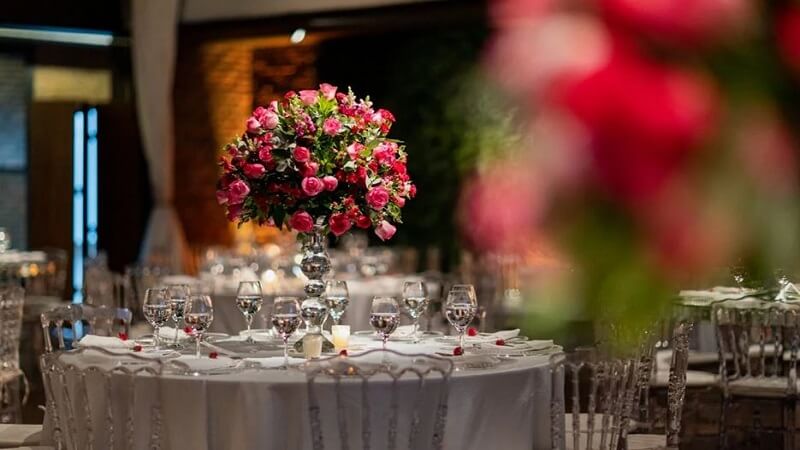In recent years, dried flowers have experienced a resurgence in popularity, gracing everything from minimalist living rooms to chic wedding venues. Once considered a nostalgic relic of bygone eras, dried blooms are now celebrated for their unique beauty, eco-friendliness, and versatility in contemporary spaces. As the world gravitates toward more sustainable living, these enduring botanicals offer a timeless aesthetic appeal that fresh flowers cannot consistently achieve. Whether incorporated into statement bouquets or as subtle accents, long-lasting dried flower arrangements bring an air of sophistication and warmth to modern interiors.
A Sustainable Approach to Interior Styling
The concept of the revival of dried flowers is based on an increased consciousness of ecological problems and a trend toward sustainable design. Unlike fresh flowers that wither in days or weeks, dried arrangements last significantly longer, reducing the replacement frequency. This longevity translates into lower costs and a minor ecological impact, aligning with the values of individuals seeking to minimize waste and live more sustainably. By opting for dried flowers, homeowners and decorators can enhance their interiors without contributing to the rapid consumption and disposal cycle often associated with fresh blooms. Additionally, dried flowers or preserved flowers are typically preserved without harsh chemicals, offering a safer alternative to synthetic or heavily processed floral options.
Interior designers have eagerly embraced dried florals, incorporating them into various styles and settings. Whether your home or office features a rustic, homely charm or a contemporary, minimalist aesthetic, dried flowers can be a tasteful and practical design element. For example, a simple bundle of dried lavender adds a calming atmosphere and infuses spaces with a subtle and elegant aroma that endures over time.
Meanwhile, pampas grass has become a popular choice for modern interiors, where it adds height, movement, and a sense of organic texture to otherwise clean and sleek spaces. This versatility makes dried flowers a practical and artistic addition that effortlessly blends with different design schemes, enhancing visual appeal without overpowering the surrounding decor.
The appeal of dried florals extends beyond aesthetics; it taps into a desire for mindful living and intentional design. Dried arrangements often evoke a sense of nostalgia, grounding a space with warmth and authenticity. They tell a story—of preservation and natural beauty captured in time—inviting appreciation and introspection. Whether displayed as an intricate centerpiece or as part of a minimalist arrangement, dried flowers invite a connection with nature’s enduring grace. This connection serves as a reminder of the beauty in imperfection and the value of slowing down in a fast-paced world.
The Timeless Elegance of Dried Flowers
Dried flowers have their sort of beauty, and this is not easily overpowered by fashion seasons. As lovely as new looks are, arranging flowers in that style seems temporary, associated with a particular season or event. Thus, dried flowers have a timeless beauty that can stir different sentiments during different seasons. Dried florals typically have low saturation, and the shades match each other well with neutral colors and furniture, wood, stone, and linen.
This versatility can only mean one thing: creativity knows no bounds. This year, interior designers and do-it-yourself enthusiasts are incorporating dried flowers in centerpiece arrangements on walls, wreaths, and table centerpieces. One of the most beautiful cases is using dried flowers and other natural materials, such as twigs, feathers, and shells, to create complex compositions simultaneously with home decorations. These designs are reminiscent of the past but, simultaneously, perfectly contemporary. They present the beauty of nature and look tender and powerful.
Dried flowers are also becoming popular in business places such as cafés, fashion houses, and offices. Business owners are attracted to dried flowers because they do not require much attention, and the flowers themselves can be striking to customers. In environments that require frequent updates and a new look, dried flowers prove to be a reasonable cost solution.
Practical Tips for Incorporating Dried Flowers at Home
For those who are thinking about incorporating dried flowers into their home, there are a few guidelines that will help you begin. First, look at the color and texture of your home’s interior space. Choose dried arrangements that are similar to or different from already incorporated pieces to achieve a good match. Subtle colors such as beige, brown, and gentle pastel shades are good if one wants to maintain a low profile, yet lively and strong colours add zest to the outfit.
Placement is also key. Don’t limit your dried flowers to the typical vase format; try placing them on the ceiling, in shadow boxes, or as part of the wall decorations. Arranging different types, lengths, and shapes of flowers will make a focal point look richer. When using dried flowers, it is advisable to be very gentle because most of the flowers are very fragile. Direct sunlight, which may lead to fading, should be avoided.
Dried flowers can be preserved easily. This way, they stay clean and ready to use, and a little non-aerosol spray can awaken the fragrance again if necessary. Purchasing high-quality dried flowers guarantees they remain a beautiful focal point for many years, enhancing any room’s charm and personality.
Conclusion
The revival of dried flowers is not simply a flash in the pan; it’s a return to sustainable, well-considered aesthetics that will last the distance and do no harm to the planet. Bringing dried flowers into your home is one way of getting a part of nature’s strength and beauty into our living spaces to motivate and soothe us. Dried flowers are used as simple or massed arrangements and have enormous potential for reflecting personal taste and individuality. Keeping with a slower pace of life and the appreciation of the natural world, these dried flowers are a constant reminder that beauty and sustainability can go hand in hand and enhance our living spaces for many years.
